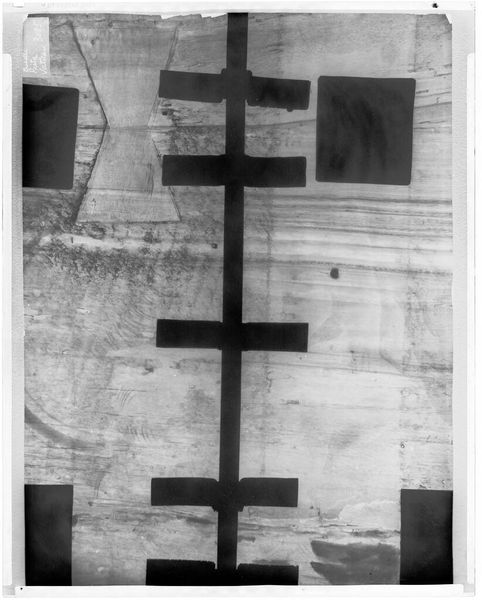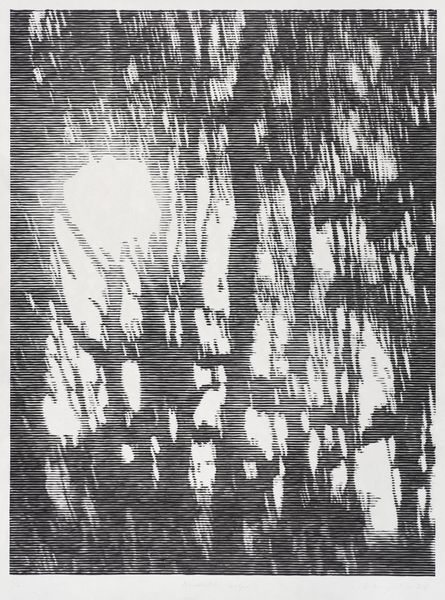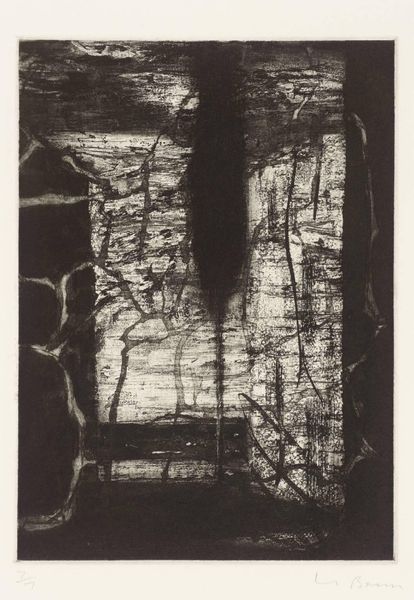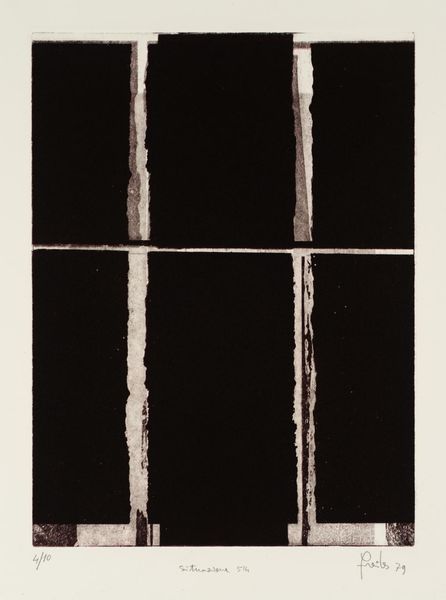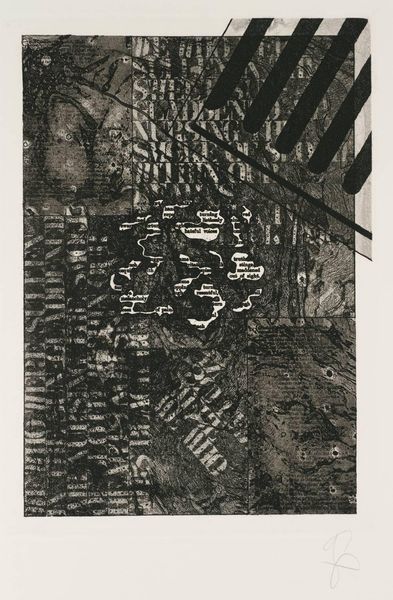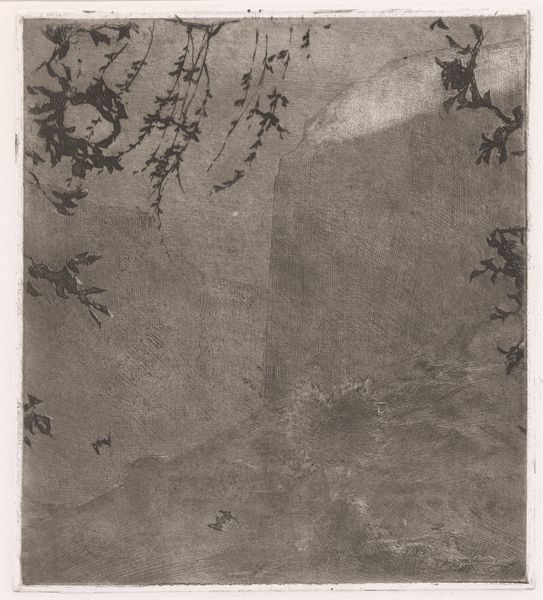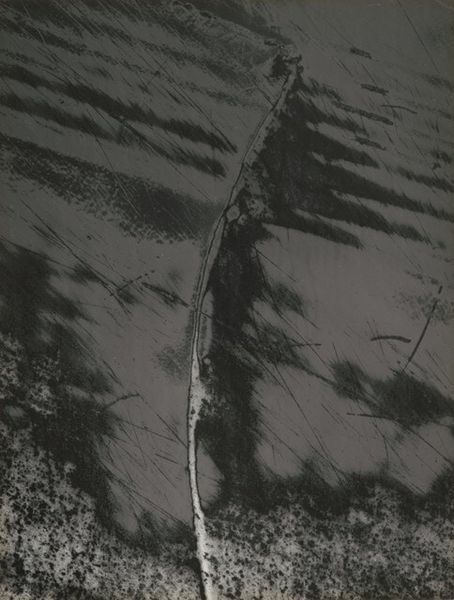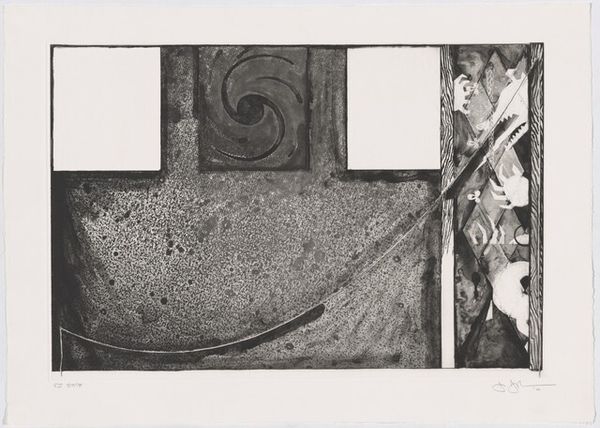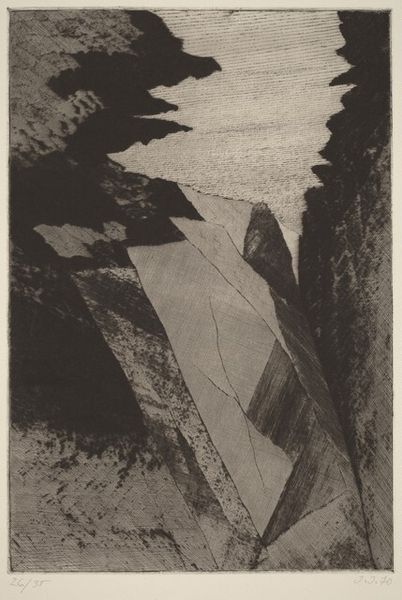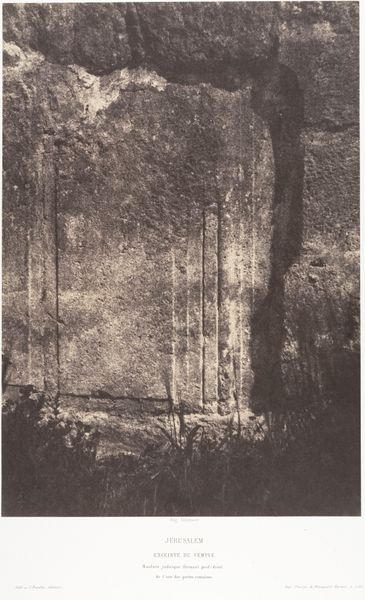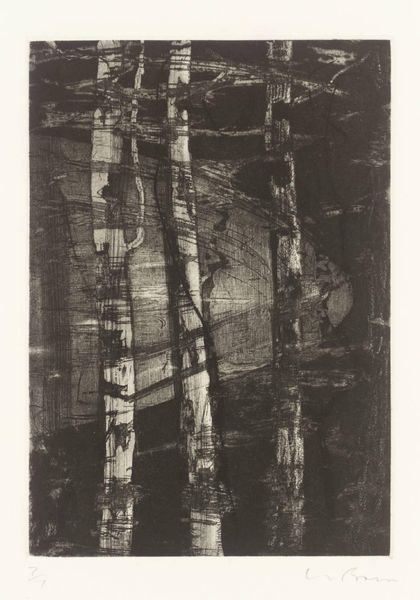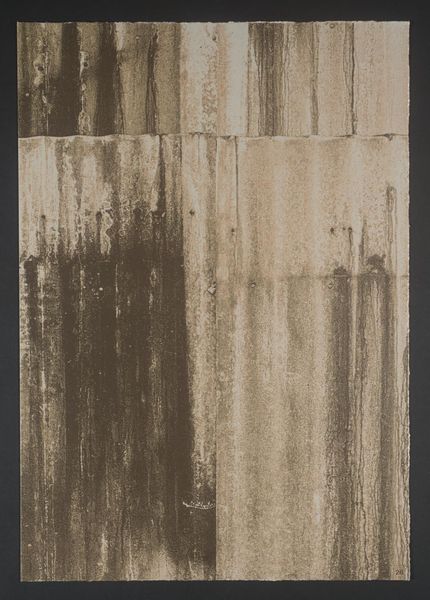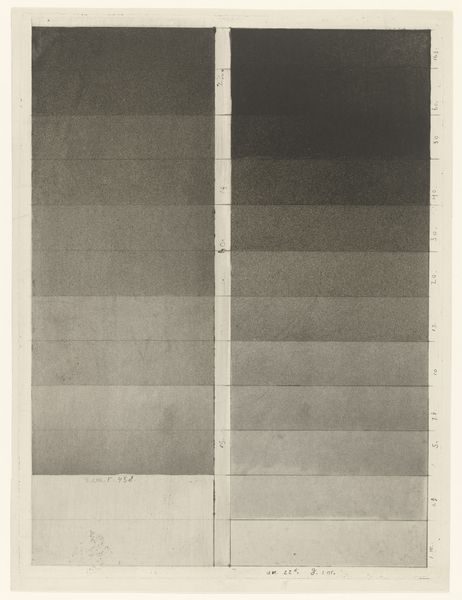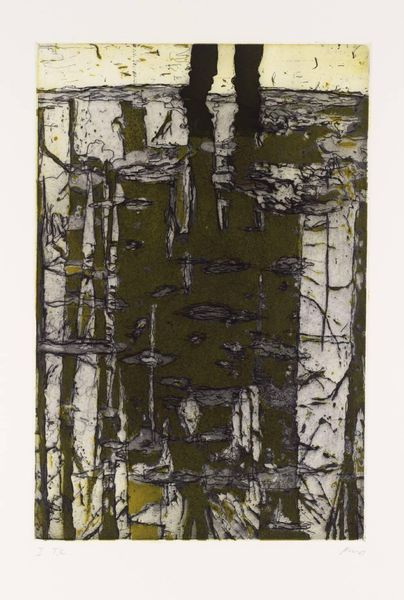
print, etching
# print
#
organic shape
#
etching
#
landscape
#
geometric
#
realism
#
monochrome
Copyright: National Gallery of Art: CC0 1.0
Curator: Standing before us is Art Salazar’s 1972 etching, “Livingston County 2.” It’s a print, rendered entirely in monochrome. Editor: My first thought is the unsettling contrast; the ordered rows of… pebbles? juxtaposed against a looser, almost chaotic field of… are those tanks? And a monolithic telephone pole slicing through it all. It creates a deeply unnerving tension. Curator: Indeed. The "pebbles" may be a comment on manicured landscapes and industrialised land use. The horizon line crowded with military tanks seems a nod to mechanized farming practices encroaching nature. That telephone pole - I read it as a technological imposition on a natural setting, like a signifier of human ‘progress’. Editor: The etching technique enhances that stark contrast. Look at the bottom half – such density and detail of tone. Then, moving upwards, it's airier and almost ethereal; the grain becoming finer, evoking both fields and the coldness of steel. Curator: Exactly! Those dense organic shapes evoke a specific cultural memory of rural landscapes versus a mechanized modern existence, speaking to a tension prevalent in 70s America: a disconnect between lived experience and collective narratives surrounding progress and control. What strikes you about it now? Editor: Still, that stark geometry dominates. That solid vertical cuts right through all other attempts at pictorial depth and throws the picture plane forward - it becomes both an actual marker of physical space, and symbolic barrier between contrasting parts of the landscape and competing methods for its domination. Curator: It definitely creates a dynamic visual dichotomy, forcing the viewer to consider their positionality within these changing spaces, their relation with nature and technology - I mean how the two constantly change one another, often violently. Editor: The artist manages to condense immense complexity into these layered forms. Looking back on the etching now, I feel unsettled with questions: what really "improves" our surroundings, when order comes into discord and so many resources come with exploitation. Curator: Likewise, the etching is an invitation to reflect on landscape beyond picturesque notions, to acknowledge complex history, industrial effects and possible trajectories impacting places that surround and define our existence.
Comments
No comments
Be the first to comment and join the conversation on the ultimate creative platform.
